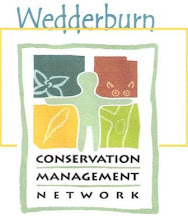 Wild food foraging has increased in popularity in Australia in recent years. In particular, mushroom picking appears to be a favourite new autumn activity. However, the fungal poisonings that resulted in two deaths in Canberra in January this year are a tragic reminder that confusing edible and poisonous mushrooms can be a fatal mistake.
Wild food foraging has increased in popularity in Australia in recent years. In particular, mushroom picking appears to be a favourite new autumn activity. However, the fungal poisonings that resulted in two deaths in Canberra in January this year are a tragic reminder that confusing edible and poisonous mushrooms can be a fatal mistake.Over the centuries and across the globe, mushrooms have been enshrouded in a bizarre and largely negative mythology. They’ve been associated with witchcraft and other evil misdoings with some cultures believing them to have supernatural powers. Yet at the same time, mushrooms have been a subsistence food for people in over 80 countries. In Australia, knowledge about the edibility of mushrooms is scant relative to that of many European and Asian nations. Of the huge diversity of mushrooms that grow in Australia, only a minority have been formally described and named. Even less is known about their edibility and toxicity.
In many countries, information about the edibility of fungi has been passed down orally over generations. People in particular areas have developed knowledge specific to their local fungi and know the features necessary to identify local edible varieties. However, over time, this knowledge has developed into folklore that has spread to other geographical regions where different varieties of fungi grow. These ‘rules’ or ‘lore’ may no longer apply in another region. It is when fungal knowledge from one region is applied elsewhere that mistaken identities can have fatal consequences. This is believed to have been the case with the recent two Canberra fatalities as well as three prior fatalities from the same area. The mushroom responsible for the deaths in Canberra was the aptly named Death Cap, or Amanita phalloides. This is an exotic species believed to have been accidentally introduced to Australia during the 1960’s. It also grows in central Victoria.
The moral to this awful scenario is that folkloric rules about edibility always have their toxic ‘exceptions’ and are therefore not failsafe. The only way to positively identify fungi is to know the characteristics specific to a particular species to ensure accurate identification, and then to have reliable information that the species in question is edible.
Despite the bad press that fungi have received due to the toxicity of some species, they are a fascinating and important group of organisms that play a vital role in maintaining the health of our forests and natural environments. Australian conservation has focussed on flora and fauna and almost entirely overlooked the third major kingdom, the fungi. Yet fungi underpin almost every terrestrial ecosystem on earth.
Although the forests in the Bendigo-Inglewood area tend to be dry, on careful inspection, fungi can be found everywhere - growing on trees, among the leaf litter and even on kangaroo scats. If you’re keen to know more about this curious kingdom and increase your fungus identification skills, you may like to attend a fungi workshop this autumn.
See article below concerning Fungi Workshops at Inglewood
Further information www.alisonpouliot.com

No comments:
Post a Comment